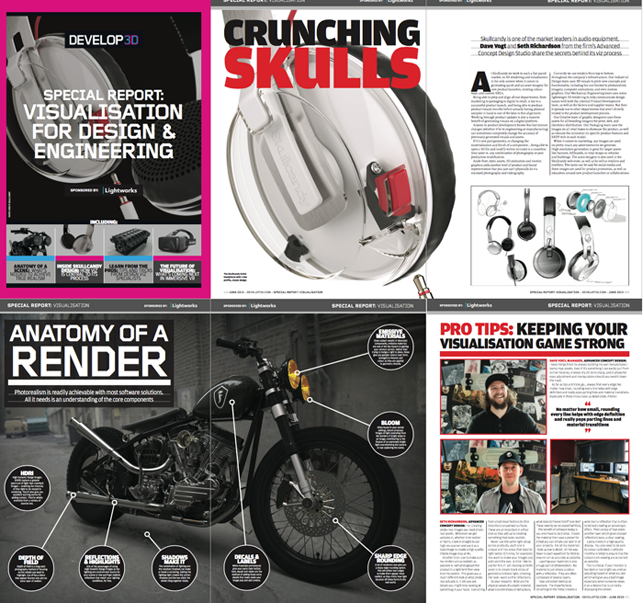Visualisation is one of the areas that we specialise in here at MindOverEye. When a client has a product, whether it’s a consumer electronic or the latest automotive offering from a manufacturer, we’re able to visualise their pre-production data for use in marketing and PR. This allows the manufacturer to create a marketing campaign prior to production models coming off the line.
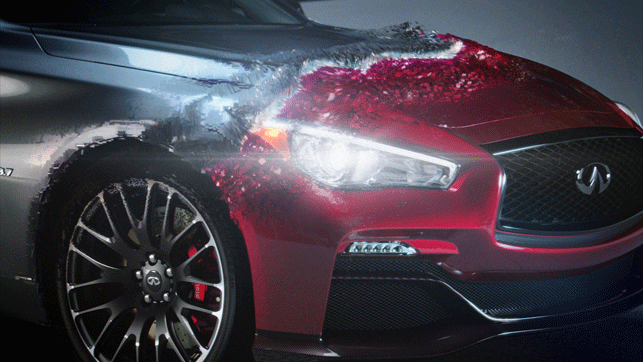
The Infiniti Q50s
reveals the beast within — the Eau Rouge, 560 bhp
The brief from infiniti
In the case of the Infiniti Beast Within, Infiniti had a concept car they wanted to show to the world in a story driven anthem piece.
The story begins with a couple returning home in the dusk hours. After their Infiniti Q50s is left for the night in the driveway, the blood moon causes it to transform into the Eau Rouge, a 560hp beast. The idea is that in every Q50s lurks the Eau Rouge.
There was one hitch to the production, only two Eau Rouges existed in the world. Neither of them could be used on set as one was mechanically an Eau Rouge, but didn’t have picture car finish, and the other had the picture finish, but was inoperable. The only way we could execute on the piece was to use a CG Eau Rouge.
The process entails three different phases: Pre-Production, Production and Post- Production.
Pre-Production consists of the creative development, animatic, previs, asset preparation and shoot planning/ preparation. Production encompasses the shoot and capture of data from set needed for the Post-Production phase. Lastly, Post- Production includes the edit, sound, music, VFX, colour and finishing.
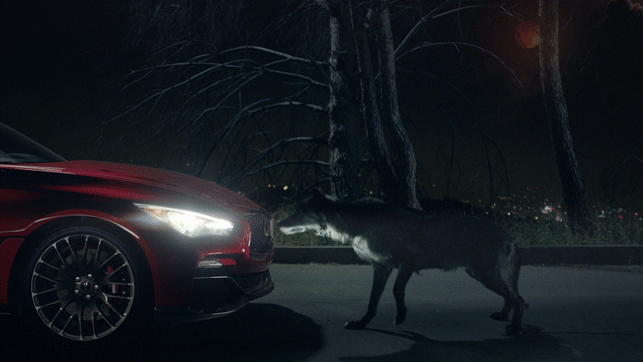
The Eau Rouge
meets its wild counterpart on the road
#1: Pre-production
The Pre-Production phase began with the initial concepts and a storyboard. Once the creative was locked down with the client approval, we moved forward with creating an animatic; taking the storyboards and sitting with an editor to determine the shot length utilising just the images from the storyboards.
Once the timing was approved and an animatic was created we moved into Previs. Previs, short for pre-visualisation, is the process where dummy geometry is used in 3D to block out animation and camera moves for each shot. In effect it creates the story, angles, timing and a roadmap for the VFX department of the entire piece.
The resulting video from Previs was then used as a shot board for production on set, determining the live action camera angles and number of shots needed at each location for the live production team to acquire.
During the Pre-Production phase our Asset Preparation team went through the Eau Rouge CAD data and corrected any issues that would lead to less than perfect renders. Any objects that had issues were retopologised, UV texture coordinates created for parts with the carbon fibre texture and V-Ray materials assigned to the vehicle.
Senior lighting artists use a standard lighting rig to dial in the materials to a photo real finish. By using V-Ray, a physically accurate renderer, we can dial in materials using a High Dynamic Range Image (HDRi) of our Photo Studio.
In addition to the HDRi, we use physically accurate V-Ray lights to mimic our onset Keno Lights. This rig allows us to create the practical photo studio lighting in 3ds max, giving us a real life comparison in 3D.
#2: Production
The next step in the process is the Production. During the production a mule car was used in place of the Eau Rouge to achieve the proper framing and focus of the action. A mule car is a vehicle used as a stand in for a CG vehicle.
Since the wheel base and primary design of the Q50s and the Eau Rouge are so similar we were able to use a Q50s as the mule car.
Tracking markers were attached to the mule car to help the matchmoving/tracking process. In addition to tracking markers the onset VFX supervisor captured HDRIs of each of the lighting setups, measurements of each location, texture reference and camera data, all of which are needed for the Post Production phase.

Behind the scenes during the meeting of the two beasts
#3: Post-production
After the live production shoot, the Post-Production phase begins. The footage is ingested and cut into the edit. At this point, any disparities between the previs video and the shots captured are worked into the edit. The disparities are usually due to adaptations needed in the production on set to compensate for a multitude of unknown variables such as location, lighting, and performances.
Once the edit is approved, VFX, colour, sound design and music can all begin. The first step for VFX is the breaking out and prepping of VFX shots from the edit.
At the same time the Colourist begins work on creating uniformity across all the shots and then creating a look for the piece.
The VFX department works in the RAW camera colour space so that any adjustments the Colourist makes to the raw footage will transfer over to finished VFX shots.
This process allows the Colourist a great deal of flexibility to adjust the look of the piece all the way up through delivery. The footage is then sent through a process of tracking and matchmoving.
During this process the 3D Eau Rouge is matched to the movement of the mule car captured in the footage. In addition, 3D cameras that match the live production camera angles are generated.
The combination of matchmoving and tracking allows us to place the Eau Rouge in the same physical space as the mule car that was shot on set.
From there, any secondary animation or effects work begins. Lighting artists begin the process of matching the car in 3D to each location and shot.
Once the lighting is finished then the 3D files are rendered on a farm of machines designed solely for the purpose of creating the 2D images from the 3D files. Compositors take the rendered images and integrate them into the live action shots.
Once the VFX has integrated the CG into the footage, it’s then handed off to the Colourist to final the visual look of the piece. The editor then combines the final audio and visual pieces together into a finished piece.
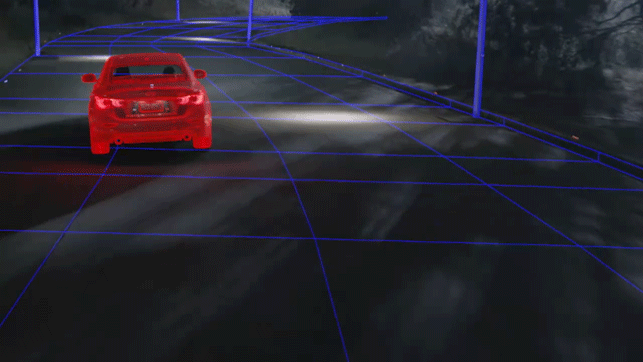
Matchmoving wireframe overlayed on the footage to ensure the accuracy of the track
A result to be proud of
In the end, the Infiniti Beast Within anthem piece consisted of 56 visual effects shots that utilised six software packages, 24 artists, two producers, three production coordinators, with a runtime of 2 mins 44 secs and all completed within eight weeks.
It was the constitution of our crew that pushed through the 14-hour days, 7 days a week to ensure that we created a piece that we would all be proud of showcasing.
■ mindovereye.com ■ chaosgroup.com
DEVELOP3D Visualisation For Design And Engineering Special Guide
Download our free guide to the latest viz software and hardware, plus exclusive pro tips and views on where everything is heading in the future. Not signed up to DEVELOP3D yet? It’s simple and free to do, and you can download our monthly magazine for product designers, engineers, makers and anyone else wanting to join the party – Sign up here.
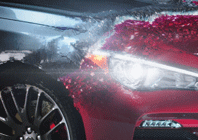
Visualisation specialist MindOverEye combines the digital with the real
Default


